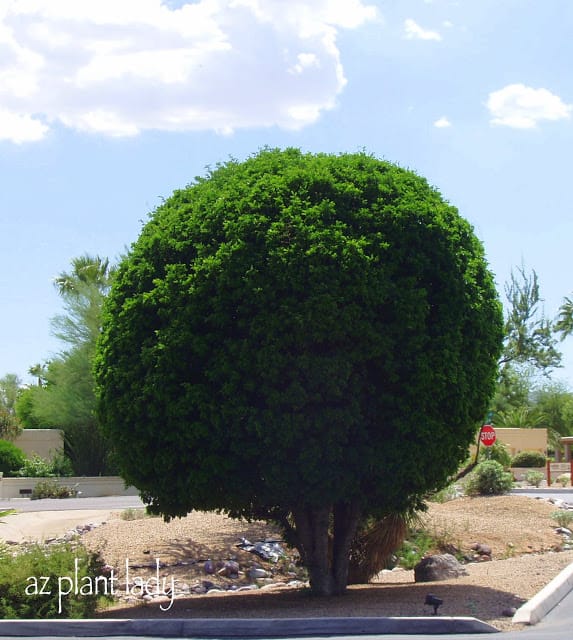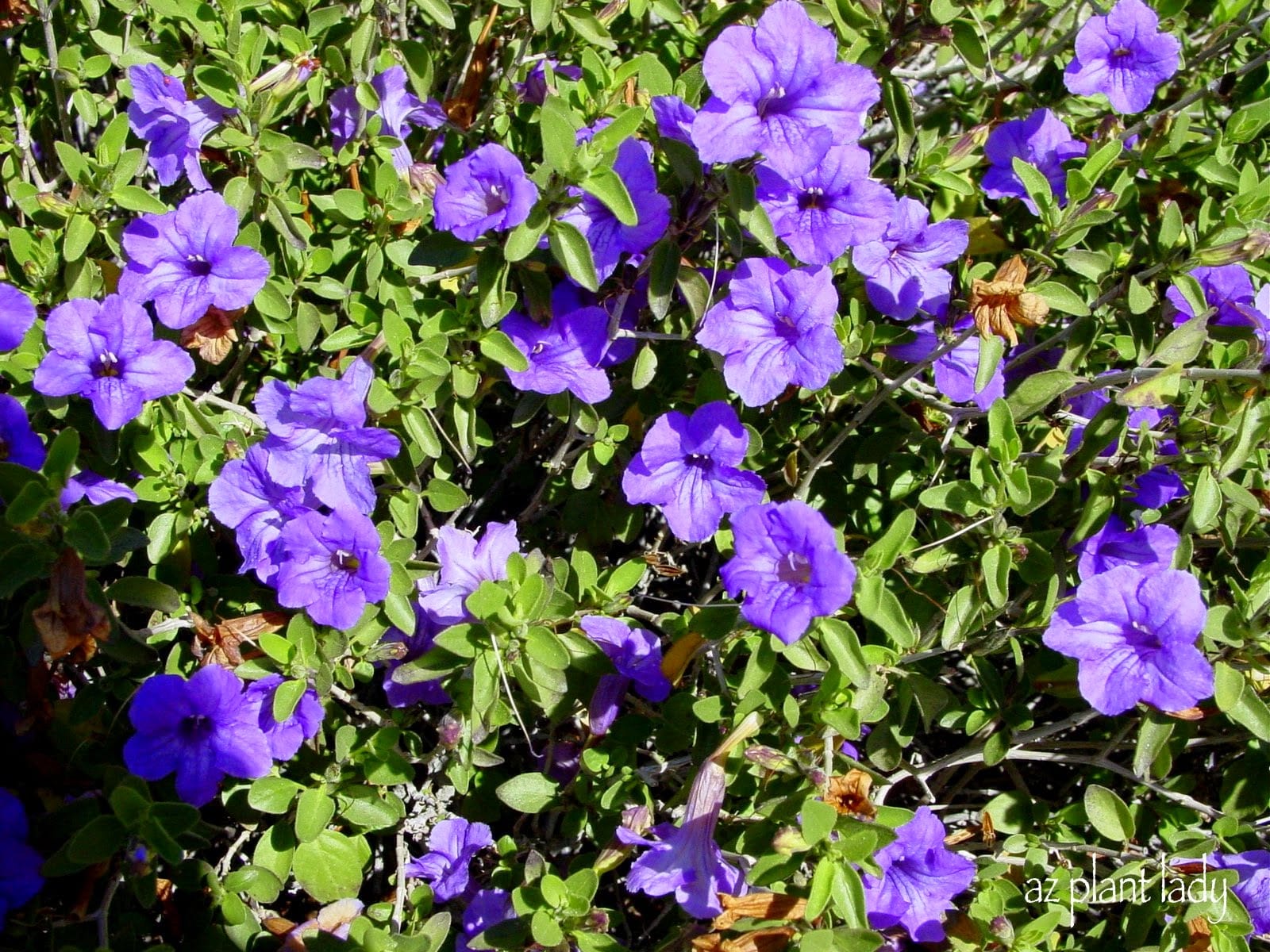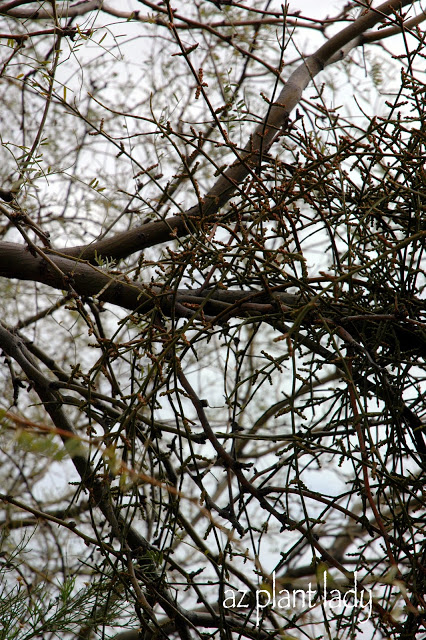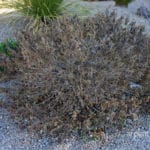Which Would You Prefer? Poodled or Natural?
Anyone who has spent any time with me in the garden, soon learns how much I dislike formal pruning of flowering shrubs and desert trees. In the plant industry, we sometimes refer to this type of pruning as ‘poodle pruning’ because of the over abundance of round-shaped trees and shrubs.
I spend a lot of time with clients, teaching them how to properly prune their trees and shrubs and most of the time it does not involve the use of a hedge trimmer.
I recommend throwing away your hedge trimmers if you are tempted to use them on your native, desert plants and use only loppers and hand pruners 😉
Over ten years ago, the community where I was working asked me to do a consultation for the local church. Part of the consultation involved going over the current maintenance practices. This church had a Texas Ebony tree (Ebenopsis ebano) that had not been pruned correctly. In fact, there were signs that the infamous hedge trimmers had been hard at work…..

Now you may not think that this Texas Ebony tree looks all this bad. There may even be some of you who think that most trees should be maintained this way.
Well the reasons for not pruning your trees this way are many:
– Repeated shearing blocks the sunlight from reaching the interior branches, causing their eventual death which leaves large dead areas which are unattractive.
– This same type of pruning actually increases the maintenance required, because each time you prune, the tree works hard to replace the leaves lost. Remember, it is the leaves that make the food for the tree.
– This extra growth also requires the tree to take more water, which is already a precious resource here in the Southwest.
Now if those reasons do not convince you, please look at the photo below of the same tree, which is now being maintained as I had recommended….

You know what? It is so incredibly rewarding to revisit a landscape when those in charge have implemented some of my suggestions. Sadly, that doesn’t always happen 😉
Doesn’t this Texas Ebony look beautiful?
Now, a yearly pruning using a lopper or pruning saw is all this tree requires instead of multiple visits using a hedge trimmer.
Prune any dead and/or crossing branches and any over-reaching side branches as desired. Raise the tree canopy gradually until you reach the desired height above the ground.
Texas Ebony is a slow-growing tree with beautiful, dark green leaves. It does have thorns, so be sure to wear gloves and keep away from high traffic areas. Brown seed pods appear later in the year.
If the photos above have not convinced you not to prune your Texas Ebony into a ‘ball’, are some other examples of others that have been pruned to accentuate their natural shape…


So, which one would you rather have in your garden?


****************************
I would like to thank you all for your nice comments about my new Southwest blog at BirdsandBloomsblog.com
Here is a related post about formal pruning that you can read if you like:
Flowering Shrubs Aren’t Meant to be Cupcakes, Poodles or Frisbees

 Noelle Johnson, aka, 'AZ Plant Lady' is a author, horticulturist, and landscape consultant who helps people learn how to create, grow, and maintain beautiful desert gardens that thrive in a hot, dry climate. She does this through her consulting services, her online class Desert Gardening 101, and her monthly membership club, Through the Garden Gate. As she likes to tell desert-dwellers, "Gardening in the desert isn't hard, but it is different."
Noelle Johnson, aka, 'AZ Plant Lady' is a author, horticulturist, and landscape consultant who helps people learn how to create, grow, and maintain beautiful desert gardens that thrive in a hot, dry climate. She does this through her consulting services, her online class Desert Gardening 101, and her monthly membership club, Through the Garden Gate. As she likes to tell desert-dwellers, "Gardening in the desert isn't hard, but it is different."















I'm with you…prefer the more natural look….I do like trees trimmed up from the bottom so I can see around it ..
Definitely the natural shape! I do my landscaping like that too. It just looks so much better than these round balls everywhere!
Thanks for your service to the southwest. I only wish a huge campaign of PSA's went out in each regional city on the benefits of such things! Esp not doing it in the first place, but how it can be corrected.
Why would anyone in their right mind, keep a tree with plenty of room to develop, from shading the ground and filtering the sun in the SOUTHWEST?
AMEN!!!!!
When I had less space, the poodle look was a little more rampant in my gardens, but honestly, the natural forms are so much more beautiful, and much less work!
Great post Noelle. All that pruning requires so much work, I can never understand why people would choose to create more work for themselves when the plant is just as happy or happier left alone.
I think those poodles are for "FORMAL" spots – I'm not formal… so I like the natural! 🙂
Texas Ebony is such a beautiful tree. I can not believe someone did that. Please, natural for me!
I prefer wild gardens and enjoy natural look.
I am also picky about what is beautiful, but this tree is beautiful to me both ways. One just happens to be formal and the other natural.
Ah! Finally a site that addresses my concerns. We have a newly planted Texas Ebony (6 mos ago). It is very healthy and has started to develop long tentacles in all directions. Having seen warnings about early pruning, I'm not sure how to prune at this point, or not.
Thanks for any advise.
Hi John,
What a great question! You are right that in general, it's best not to prune a newly planted tree. But, if those wayward tentacles are bothering you – you can prune them back – but remove as little as possible. For an established tree, you shouldn't remove more than 20% of its foliage when pruning – for a new tree, it's less.
Any removal of the leaves, which make the 'food' for the tree to help it grow, can slow down the growth somewhat. But, if it were my tree and it had a few wayward branches that bugged me – I'd prune them off.
I hope this helps!
Noelle 'azplantlady'